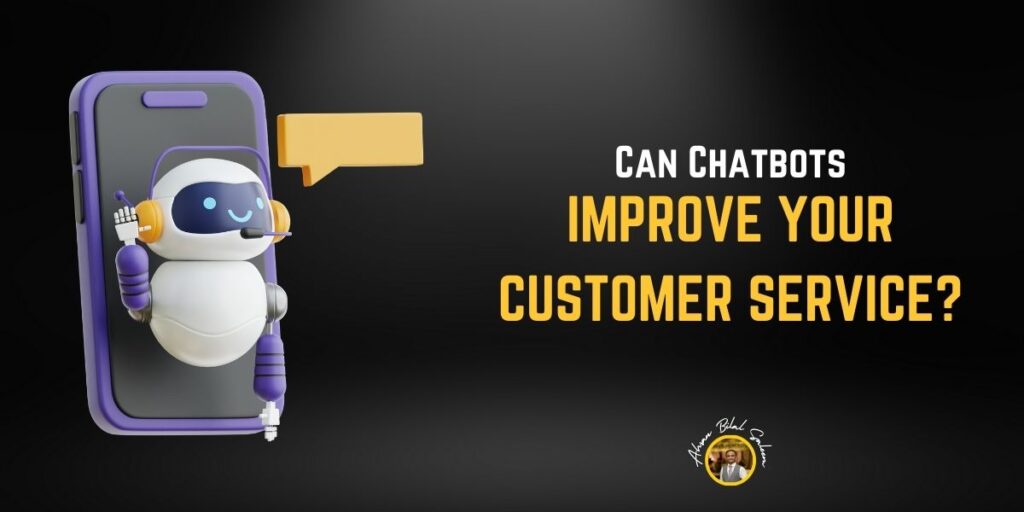In the dynamic landscape of digital marketing and customer engagement, businesses continuously seek innovative ways to enhance customer service. One of the most promising advancements in this area is the deployment of chatbots. But the question remains: can chatbots truly improve your customer service? Let’s delve into the potential benefits, challenges, and best practices for integrating chatbots into your customer service strategy.
Understanding Chatbots
Chatbots are AI-powered programs designed to simulate human conversation. They can interact with users through text or voice, providing instant responses to queries. These virtual assistants are employed across various platforms, including websites, social media, and messaging apps, offering 24/7 support.
The Benefits Of Chatbots In Customer Service
24/7 Availability
Continuous Support: One of the most significant advantages of chatbots is their ability to provide round-the-clock assistance. Unlike human agents, chatbots don’t need breaks, ensuring that customers receive immediate responses regardless of the time of day.
Instant Responses
Speed and Efficiency: In today’s fast-paced world, customers expect quick solutions. Chatbots can deal with various inquiries all the while, conveying moment reactions and diminishing stand by times fundamentally.
Consistency And Accuracy
Uniform Service: Chatbots provide consistent information, minimizing the risk of human error. They adhere strictly to the programmed guidelines, ensuring that customers receive accurate and uniform responses.
Cost-Effectiveness
Reduced Operational Costs: Implementing chatbots can lead to significant cost savings. They can handle a large volume of routine inquiries, freeing up human agents to focus on more complex issues, thereby optimizing resource allocation.
Scalability
Handling High Volumes: During peak times or special promotions, chatbots can efficiently manage a surge in customer inquiries without compromising on service quality.
Challenges In Implementing Chatbots
Limited Understanding
Complex Queries: While chatbots excel at handling straightforward questions, they may struggle with complex or nuanced inquiries that require human judgment and empathy.
Personalization
Human Touch: Some customers prefer human interaction and may find chatbots impersonal. Balancing automation with a human touch is crucial to maintaining customer satisfaction.
Technical Glitches
Reliability: Like any technology, chatbots are not immune to technical issues. Regular updates and maintenance are necessary to ensure they function smoothly.
Best Practices For Utilizing Chatbots
Define Clear Objectives
Purpose and Goals: Clearly outline what you aim to achieve with your chatbot. Whether it’s handling FAQs, assisting with transactions, or providing product recommendations, having defined goals will guide the chatbot’s design and functionality.
Human Handover Mechanism
Seamless Transition: Ensure that your chatbot can smoothly transfer complex queries to human agents. This hybrid approach combines the efficiency of chatbots with the empathy and expertise of human support.
Regular Updates And Training
Continuous Improvement: Regularly update your chatbot’s knowledge base and capabilities to keep up with evolving customer needs and preferences. Machine learning can help chatbots learn from past interactions and improve over time.
Personalization And Customization
Tailored Interactions: Use customer data to personalize interactions. A chatbot that can address customers by name and remember past interactions can significantly enhance the customer experience.
User Feedback
Listening to Customers: Collect and analyze user feedback to identify areas for improvement. Customer insights can help refine the chatbot’s functionality and performance.
Conclusion
So, can chatbots improve your customer service? The answer is a resounding yes, provided they are implemented thoughtfully and strategically. Chatbots offer numerous benefits, including 24/7 availability, instant responses, and cost savings. However, it’s essential to recognize their limitations and complement them with human support where necessary. By adopting best practices and continuously refining your chatbot strategy, you can enhance customer satisfaction and streamline your service operations, ultimately driving business success.
